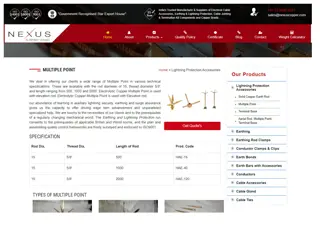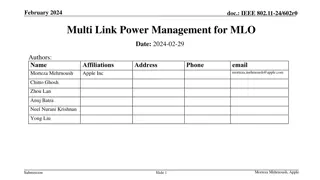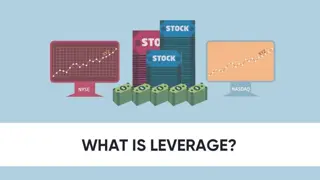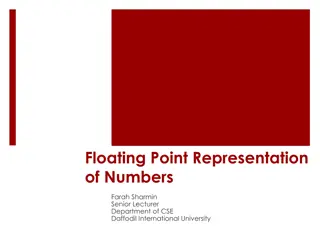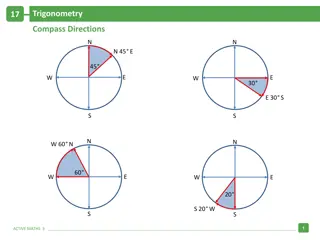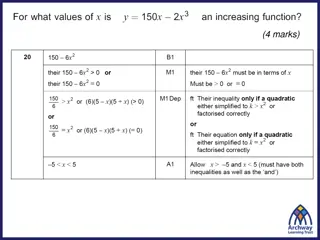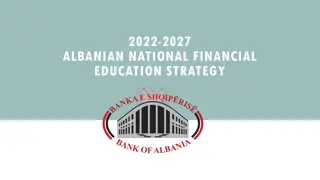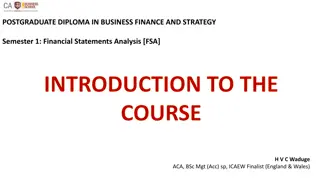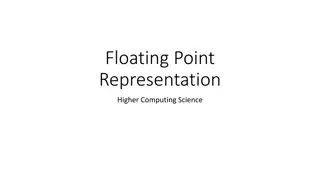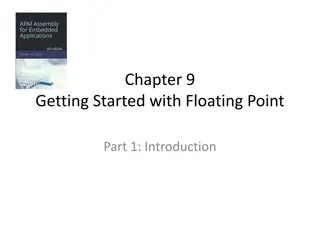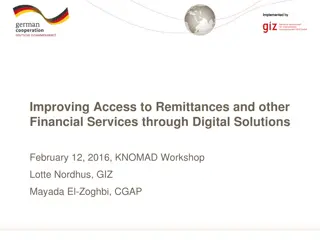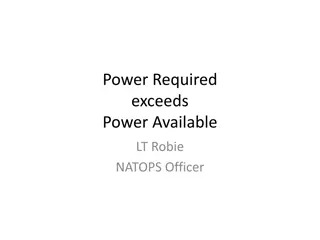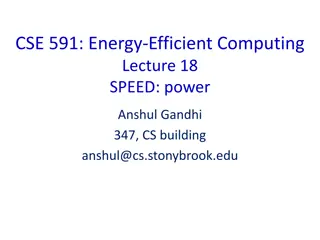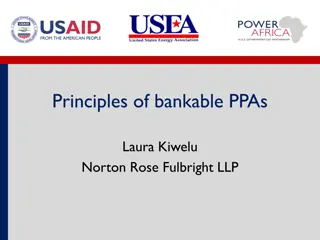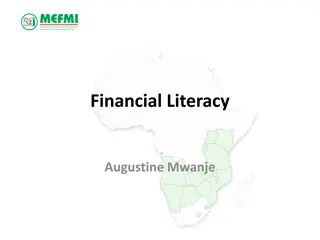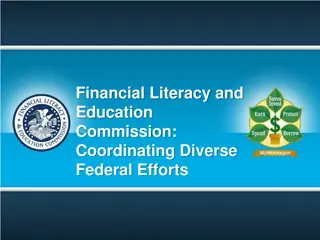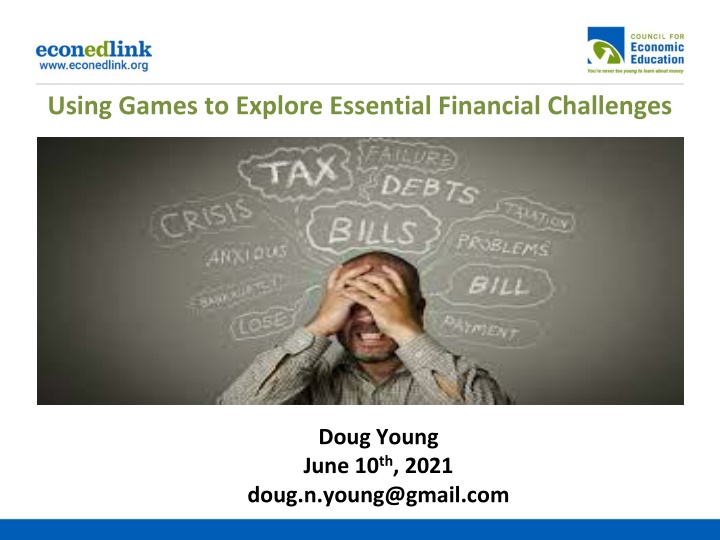
Exploring Essential Financial Challenges Through Games
Dive into essential financial concepts through interactive games. Enhance your financial literacy skills, understand credit options, savings strategies, and economic decision-making. Access professional development resources and certifications. Explore national and state standards for financial literacy.
Download Presentation

Please find below an Image/Link to download the presentation.
The content on the website is provided AS IS for your information and personal use only. It may not be sold, licensed, or shared on other websites without obtaining consent from the author. If you encounter any issues during the download, it is possible that the publisher has removed the file from their server.
You are allowed to download the files provided on this website for personal or commercial use, subject to the condition that they are used lawfully. All files are the property of their respective owners.
The content on the website is provided AS IS for your information and personal use only. It may not be sold, licensed, or shared on other websites without obtaining consent from the author.
E N D
Presentation Transcript
Using Games to Explore Essential Financial Challenges Doug Young June 10th, 2021 doug.n.young@gmail.com
EconEdLink Membership You can now access CEE s professional development webinars directly on EconEdLink.org! To receive these new professional development benefits, become an EconEdLink member. As a member, you will now be able to: Automatically receive a professional development certificate via e-mail within 24 hours after viewing any webinar for a minimum of 45 minutes Register for upcoming webinars with a simple one-click process Easily download presentations, lesson plan materials and activities for each webinar Search and view all webinars at your convenience Save webinars to your EconEdLink dashboard for easy access to the event You may access our new Professional Development page here
Professional Development Certificate To earn your professional development certificate for this webinar, you must: Watch a minimum of 45-minutes and you will automatically receive a professional development certificate via e-mail within 24 hours. Accessing resources: You can now easily download presentations, lesson plan materials, and activities for each webinar from EconEdLink.org/professional-development/
National Standards Students will understand that: People cannot buy or make all the goods and services they want; as a result, people choose to buy some goods and services and not buy others. People can improve their economic wellbeing by making informed spending decisions, which entails collecting information, planning, and budgeting. Students will understand that: Credit allows people to purchase goods and services that they can use today and pay for those goods and services in the future with interest. People choose among different credit options that have different costs. Lenders approve or deny applications for loans based on an evaluation of the borrower s past credit history and expected ability to pay in the future. Higher-risk borrowers are charged higher interest rates; lower-risk borrowers are charged lower interest rates. Students will understand that: Saving is the part of income that people choose to set aside for future uses. People save for different reasons during the course of their lives. People make different choices about how they save and how much they save. Time, interest rates, and inflation affect the value of savings. https://www.councilforeconed.org/wp-content/uploads/2013/02/national-standards-for-financial-literacy.pdf
N.Y. State Standards 12.E1 INDIVIDUAL RESPONSIBILITY AND THE ECONOMY: Individuals should set personal financial goals, recognize their income needs and debt obligations, and know how to utilize effective budgeting, borrowing, and investment strategies to maximize well-being. 12.E1a In making economic decisions in any role, individuals should consider the set of opportunities that they have, their resources (e.g., income and wealth), their preferences, and their ethics. 12.E1b Sound personal financial (money management) practices take into account wealth and income, the present and the future, and risk factors when setting goals and budgeting for anticipated saving and spending. Cost-benefit analysis is an important tool for sound decision making. All financial investments carry with them varying risks and rewards that must be fully understood in order to make informed decisions. Greater rewards generally come with higher risks. 12.E1c Managing personal finance effectively requires an understanding of the forms and purposes of financial credit, the effects of personal debt, the role and impact of interest, and the distinction between nominal and real returns. Predatory lending practices target and affect those who are least informed and can least afford such practices. Interest rates reflect perceived risk, so maintaining a healthy credit rating lowers the cost of borrowing.
Objectives Identify the elements of a typical monthly family budget including income, living expenses, savings and net worth. Understand the financial risk versus return costs offered by banks, including compounding of investments and loans. Classify goals as short, mid or long-term and see how debt and budgeting impacts these goals. Describe the characteristics of the five main types of plastic money cards and the costs and benefits associated with each. Know the 3 main credit reporting agencies and their tracking of debt. Know how credit scores are created, the characteristics of a score and its impact. Know the basics of investing needed for financial stability and wealth growth.
Agenda Lessons on Managing Money Budgeting: Know Your Numbers Understanding risks versus returns when investing Strategies, Concepts and Jargon Customizing Jeopardy Template for in- class and hybrid use Formative Assessments Playing Wall Street Jeopardy Kahoot Game Summative Assessment
References Managing Your Money https://www.econedlink.org/resources/managing-your-money/ Credit Reports and Credit Scores https://www.econedlink.org/resources/credit-reports-and-credit-scores/ Getting Out of Debt https://www.econedlink.org/resources/getting-out-of-debt/ What is Credit? What is Credit? https://www.econedlink.org/resources/what-is-credit/ Learning, Earning and Investing https://www.econedlink.org/resources/what-is-a-stock-lesson-demo/ https://www.econedlink.org/resources/what-is-a-bond-lesson-demo/ https://www.econedlink.org/resources/what-are-mutual-funds-lesson-demo/
Sample Family Budget https://criticalcommons.org/view?m=3nlomZhMc Ka Ching by CXO-CBX https://www.youtube.com/watch?v=GXE_n2q08Yw For the Love of Money by The O Jays https://www.youtube.com/watch?v=GvQmDIcd4SU Money (That s What I Want) by Barret Strong
The Rule of 72 states that 72 divided by the interest rate will result in the number of years it will take your investment to double ... https://www.econedlink.org/resources/compound-interest-calculator/
Vocabulary A.P.R. Bonds Budgeting C.D. s, Money Market Funds Commercial Bank Compounding Interest Credit Card Credit Union Credit Reports (components) Credit Score (components) Debit Card Deposit/Withdrawal Dividends/Capital Gains F.D.I.C. Fraud in Investing Federal Reserve Bank Gift Card Goal Setting (short long) Gross v. Net Pay Investing and Saving Monthly Living Expenses Mutual Funds Net Worth Overdraft Predatory Lenders Pre-paid Card Rule of 72 Stocks/Bonds/ Mutual Funds Store Cards 4 C s for a loan
Types of Stocks Wall Street Animals Stock Markets Market Jargon Investment Fraud Types of Investment 100 100 100 100 100 100 200 200 200 200 200 200 300 300 300 300 300 300 400 400 400 400 400 400 500 500 500 500 500 500 FINAL QUESTION
Plastic Money Cards Managing Money Banking and Saving Credit Scores Debt Investing 100 100 100 100 100 100 200 200 200 200 200 200 300 300 300 300 300 300 400 400 400 400 400 400 500 500 500 500 500 500 FINAL QUESTION
Category Change: Credit Reports 1. Which of the following is not a credit reporting agency? A. Experian B. Trans Union C. Fair Issac Company D. Equifax 2. Which of the following terms DOES NOT appear on a credit report? A. Salary B. Social security C. Credit information D. Bankruptcies, if any. 3. Which of the following terms DOES appear on a credit report? A. Race B. Education C. Marital Status D. Debts owed 4. How long do most items, good or bad, remain on a credit report? A. One year B. Five years C. Seven years D. Ten years 5. Which of the following is not one of the four stages of investing? A. Earning B. Saving C. Growing D. Spending
Answers: Credit Reports 1. Which of the following is not a credit reporting agency? A. Experian B. Trans Union C. Fair Issac Company D. Equifax 2. Which of the following terms DOES NOT appear on a credit report? A. Salary B. Social security C. Credit information D. Bankruptcies, if any. 3. Which of the following terms DOES appear on a credit report? A. Race B. Education C. Marital Status D. Debts owed 4. How long do most items, good or bad, remain on a credit report? A. One year B. Five years C. Seven years D. Ten years 5. Which of the following is not one of the four stages of investing? A. Earning B. Saving C. Growing D. Spending
Kahoot Lesson 1. Monthly costs (good debt) which you need to pay to survive in life? A. Net Worth D. Net Pay B. Living Expenses E. Five or More C. Housing 2. Your assets (savings, stocks, bonds, etc.) minus your debt is known as: A. Net Worth D. Net Pay B. Living Expenses E. Five or More C. Housing 3. Wages you actually receive after taxes are deducted? A. Net Worth D. Net Pay B. Living Expenses E. Five or More C. Housing 4. A long term goal is on that is usually needs how many years to accomplish? A. Net Worth B. Living Expenses D. Net Pay E. Five or More C. Housing 5. The average American spends most of their monthy income (25-30%) on this need? A. Net Worth B. Living Expenses D. Net Pay E. Five or More C. Housing
Kahoot Answers 1. Monthly costs (good debt) which you need to pay to survive in life? A. Net Worth D. Net Pay B. Living Expenses E. Five or More C. Housing 2. Your assets (savings, stocks, bonds, etc.) minus your debt is known as: A. Net Worth D. Net Pay B. Living Expenses E. Five or More C. Housing 3. Wages you actually receive after taxes are deducted? A. Net Worth D. Net Pay B. Living Expenses E. Five or More C. Housing 4. A long term goal is on that is usually needs how many years to accomplish? A. Net Worth B. Living Expenses D. Net Pay E. Five or More C. Housing 5. The average American spends most of their monthly income (25-30%) on this need? A. Net Worth B. Living Expenses D. Net Pay E. Five or More C. Housing
Summative Assessments 1. Have students test their budget knowledge playing Budget Odyssey : https://econedlink.org/resources/budgetodyssey/. When complete, check for understanding by discussing the following questions. What is income (net v. gross) and why the difference? What is a fixed v. variable expense? Provide two examples for each Five reasons why is it important to establish a balanced budget? 2. Research a local financial institution to determine the specific services they provide. Write a few paragraphs explaining how they would advise a fictitious family to use the services offered to solve a family s financial dilemma. 3. Have students form groups of 2-3. Create a questionnaire with each student interviewing at least 2-3 adults. Questions might be on the number of credit cards, the interest rates on each, their credit score, the three credit reporting agencies and Utilization Rate of existing credit. Have students use butcher block paper to record answers and then discuss. The results will be amazing.
CEE Affiliates https://www.councilforeconed.org/resources/local-affiliates/
Thank You to Our Sponsors!


